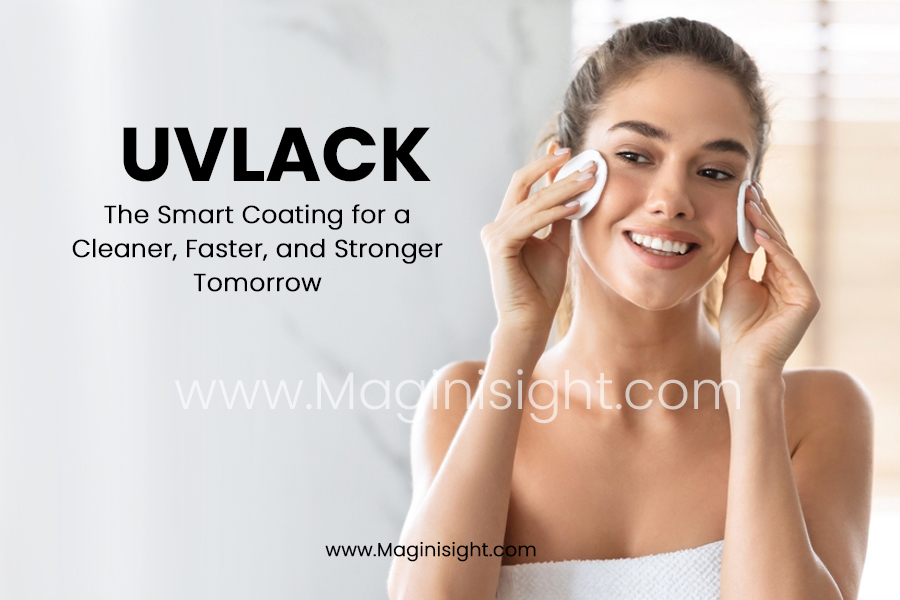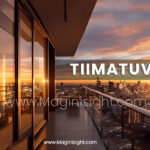UVLACK represents the next generation of ultraviolet (UV) coating technology, offering industries a powerful way to enhance the durability, appearance, and sustainability of their products. In a market driven by efficiency, performance, and environmental responsibility, UVLACK stands out for its ability to combine rapid curing, eco-friendly formulation, and aesthetic precision in one solution.
At its core, UVLACK delivers fast, durable, and eco-conscious UV coatings that transform how materials perform under stress, exposure, and time. From furniture finishes and automotive components to electronics and packaging, the versatility of UVLACK coatings makes them an indispensable part of modern manufacturing and product design.
What distinguishes UVLACK from traditional coatings is its photochemical curing process. Rather than relying on heat or extended drying times, it coatings use ultraviolet light to initiate polymerization — creating a tough, resilient finish in seconds. This not only increases production speed but also significantly reduces energy consumption and volatile organic compound (VOC) emissions, making it a leading choice for industries seeking efficiency and sustainability.
In this comprehensive guide, we’ll explore how UVLACK technology works, its scientific foundation, major industrial applications, and how it continues to shape the future of surface protection and design.
What Is UVLACK?
UVLACK is an advanced UV-curable coating engineered to provide superior surface protection and enhanced visual appeal. Developed through cutting-edge material science, these coatings utilize photoinitiators — chemical agents that react when exposed to UV radiation — to harden the coating almost instantly.
Unlike traditional solvent-based coatings that depend on air-drying or heat-curing, it hardens through photopolymerization, a process that creates a cross-linked molecular structure known for its exceptional hardness, gloss, and chemical resistance.
Core Features of UVLACK Technology
-
Instant curing: Hardened and ready for handling within seconds.
-
High durability: Resistant to scratches, impact, and wear.
-
Eco-friendly formulation: Low VOC emissions and minimal waste.
-
Aesthetic versatility: Available in matte, glossy, and textured finishes.
-
Energy efficiency: Requires less power compared to thermal-curing systems.
Because of these features, UVLACK coatings have become a cornerstone of modern surface finishing — balancing performance, environmental responsibility, and design flexibility.
The Science Behind UVLACK Coatings
The effectiveness of UVLACK lies in its photochemical reaction process. When ultraviolet light is directed onto a UVLACK-coated surface, the photoinitiators absorb this energy and trigger a polymerization reaction in the coating’s resin matrix. This process rapidly transforms the liquid coating into a solid, cross-linked polymer film.
The result is a dense, highly resistant surface layer that provides superior protection against abrasion, moisture, and UV degradation.
Chemical Composition
A typical UVLACK coating is composed of:
-
Oligomers: The backbone polymers that define hardness and flexibility.
-
Monomers: Reactive diluents that adjust viscosity and enhance curing.
-
Photoinitiators: Compounds that react to UV light to start polymerization.
-
Additives and pigments: To control gloss, color, and flow properties.
Each component plays a role in determining the mechanical strength, surface finish, and curing speed of the coating.
Types of UVLACK Coatings
UVLACK formulations can be customized for specific industry needs:
-
Acrylic UVLACK: Known for excellent clarity and hardness.
-
Polyurethane UVLACK: Offers flexibility with high scratch resistance.
-
Epoxy UVLACK: Ideal for industrial machinery and electronic parts.
-
Hybrid UVLACK systems: Combine the best features of multiple resins.
By adjusting the resin-to-monomer ratio and the type of photoinitiator, manufacturers can fine-tune UVLACK coatings for optimal adhesion, elasticity, and optical clarity.
How the UVLACK Curing Process Works
The curing process is the defining element of UVLACK technology. Unlike conventional coatings that need hours to dry, it coatings solidify instantly when exposed to ultraviolet energy.
Step-by-Step Breakdown
-
Surface Preparation — The substrate (metal, wood, plastic, or glass) is cleaned and treated to ensure strong adhesion.
-
Coating Application — UVLACK is applied using spray, roll, or curtain coating techniques, depending on the product.
-
UV Exposure — The coated surface passes under UV lamps or LED light arrays, where photoinitiators trigger polymerization.
-
Instant Hardening — The liquid turns into a solid film in seconds, producing a durable finish ready for handling or assembly.
This fast-curing process enables high-speed production lines to operate efficiently, reducing downtime and improving overall manufacturing throughput.
Additionally, the process requires minimal heat, making UVLACK compatible with heat-sensitive materials such as plastics and composites — a major advantage over conventional thermal-curing coatings.
Industrial Applications of UVLACK
Because of its flexibility, UVLACK is used across a broad spectrum of industries, each benefiting from its unique combination of performance and sustainability.
1. Automotive Industry
In the automotive world, it coatings protect and beautify both exterior and interior surfaces. Used on dashboards, trims, and even alloy wheels, these coatings provide scratch resistance, gloss retention, and UV stability that preserve vehicle aesthetics under extreme conditions.
They also enhance chemical resistance, preventing damage from fuels, oils, and cleaning agents.
2. Furniture and Wood Finishing
Wood-based products rely heavily on UVLACK for their high-quality finishes. Furniture manufacturers prefer UV-curable coatings because they:
-
Deliver a smooth, elegant appearance
-
Offer strong protection against wear and moisture
-
Require less drying time and space
-
Produce minimal environmental emissions
From hardwood flooring to cabinet veneers, UVLACK coatings deliver consistent, beautiful results with minimal environmental impact.
3. Electronics and Consumer Goods
In consumer electronics, it ensures surface uniformity and wear protection for items such as smartphones, laptops, and home appliances. The anti-fingerprint and anti-scratch features of these coatings enhance both usability and longevity, giving products a premium feel.
4. Packaging and Printing
The printing and packaging industry benefits enormously from UVLACK technology. Glossy finishes on magazines, boxes, and labels are often the result of UV-curable coatings that dry instantly and deliver stunning color vibrancy.
Moreover, UVLACK formulations can be tailored for matte or spot-gloss effects, enhancing brand presentation while maintaining recyclability.
5. Industrial and Architectural Surfaces
In heavy industry, its coatings protect surfaces exposed to harsh environments — machinery, metal panels, and industrial flooring. For architecture, these coatings enhance façade panels, glass walls, and decorative interiors, balancing aesthetic appeal with functional resilience.
Advantages of Using UVLACK
The benefits of UVLACK coatings go beyond aesthetics — they redefine how industries approach sustainability, efficiency, and longevity.
1. Superior Durability
The cross-linked molecular structure of UVLACK makes the coating extremely tough. It resists scratches, abrasions, and chemical attacks, ensuring long-lasting protection for products exposed to demanding conditions.
2. Environmental Sustainability
UVLACK coatings are recognized for their low environmental footprint. They emit negligible VOCs, consume less energy, and generate minimal waste. This makes them compliant with global environmental regulations, including REACH and RoHS standards.
3. Speed and Efficiency
Traditional coatings may take hours to dry; UVLACK, however, cures in seconds. This reduces production time and space requirements while increasing productivity.
4. Aesthetic Excellence
From high-gloss reflective surfaces to soft-touch matte finishes, it offers unmatched visual diversity. Manufacturers can fine-tune coatings to match branding or design requirements, ensuring a flawless look every time.
5. Reduced Maintenance
Thanks to its resistance to wear, fading, and chemical corrosion, surfaces treated with UVLACK require minimal upkeep — an important factor for industrial and consumer applications alike.
Environmental Impact and Eco-Friendly Innovations
One of the most significant reasons UVLACK has gained global traction is its environmental compatibility. In an era where industries are held accountable for their carbon footprints, UVLACK stands as a model of sustainable innovation.
Traditional coatings often release volatile organic compounds (VOCs) — harmful chemicals that contribute to air pollution. In contrast, UVLACK formulations contain little to no solvents, minimizing environmental harm while improving worker safety.
Additionally, because UVLACK coatings cure without the need for high temperatures, they consume up to 70% less energy compared to conventional systems. This aligns perfectly with the modern shift toward green manufacturing and energy-efficient production.
Sustainable Manufacturing with UVLACK
As industries move toward carbon-neutral goals and green production standards, UVLACK plays a crucial role in enabling sustainable manufacturing practices. Its energy-efficient curing process not only reduces power consumption but also helps manufacturers meet stricter environmental regulations without compromising product performance.
Traditional solvent-based coatings depend heavily on fossil fuels for heat curing and emit volatile organic compounds (VOCs) into the atmosphere. These VOCs contribute to air pollution and have long-term effects on human health. In contrast, it coatings use photochemical curing, eliminating the need for heat and drastically reducing harmful emissions.
Because of its low-VOC composition and rapid curing time, it minimizes production waste and enhances overall plant efficiency. It’s an ideal solution for companies seeking ISO 14001 environmental management certification or aiming to reduce their carbon footprint.
Eco-Friendly Ingredients
Modern formulations of UVLACK are made with bio-based resins, recyclable monomers, and non-toxic photoinitiators. These advancements help reduce the dependence on petroleum-based raw materials. The industry’s ongoing research into renewable photopolymer chemistry ensures that UVLACK coatings will continue evolving toward greater sustainability in the years ahead.
Comparing UVLACK with Traditional Coatings
To appreciate the technological leap that UVLACK represents, it helps to compare it with conventional coating systems such as solvent-based, water-based, and powder coatings.
| Feature | UVLACK Coatings | Traditional Coatings |
|---|---|---|
| Curing Method | Ultraviolet light (instant) | Heat or air (slow) |
| Drying Time | Seconds | Hours |
| VOC Emissions | Extremely low | Moderate to high |
| Durability | Excellent (high scratch & chemical resistance) | Moderate |
| Energy Use | Minimal | High |
| Surface Options | Glossy, matte, textured | Limited |
| Environmental Impact | Eco-friendly | Often pollutive |
The differences are striking. UVLACK delivers speed, quality, and sustainability in one package — advantages that traditional systems cannot match. Its instant-curing capability allows for continuous production lines, reducing operational downtime and improving return on investment (ROI) for manufacturers.
Technological Innovations Behind UVLACK
The continued success of UVLACK lies in its commitment to technological progress. Engineers and chemists are constantly refining the formulas, curing systems, and application techniques that define the UVLACK coating process.
1. LED UV Technology
Recent advancements in LED-based UV lamps have revolutionized UVLACK curing. Unlike mercury vapor lamps, LED UV systems consume less energy, produce no ozone, and have longer operational lifespans. This has made UVLACK coatings even more efficient and eco-friendly.
2. Nanotechnology Integration
By incorporating nanoparticles into UVLACK formulations, manufacturers have enhanced surface hardness, abrasion resistance, and hydrophobicity. These nano-enhanced coatings are particularly beneficial for automotive, aerospace, and marine industries that demand extreme surface durability.
3. 3D Surface Compatibility
With the growth of 3D printing and additive manufacturing, it has been adapted for complex geometries and textured surfaces. This allows even intricate components to receive uniform coating coverage — an essential factor in next-generation product design.
4. Smart Functional Coatings
Research is advancing toward smart UVLACK coatings that respond to environmental stimuli. For example, formulations with self-healing or anti-bacterial properties are being developed for use in healthcare, electronics, and food packaging.
UVLACK in High-Performance Industries
1. Aerospace and Marine Applications
In aerospace and marine environments, materials are constantly exposed to UV radiation, moisture, and abrasion. UVLACK coatings provide a lightweight yet resilient barrier that preserves the integrity and appearance of metal and composite structures. Their corrosion resistance and UV stability make them ideal for long-term exposure to harsh climates.
2. Renewable Energy Sector
The renewable energy industry also benefits from UVLACK coatings, particularly in solar panels and wind turbine components. These coatings protect against degradation, increase reflectivity control, and enhance the lifespan of energy-generating equipment.
3. Medical and Healthcare Equipment
Because UVLACK can be formulated with anti-microbial additives, it is increasingly used in medical devices, hospital furniture, and diagnostic equipment. Its smooth, non-porous finish resists contamination and is easy to sterilize — critical qualities in medical environments.
4. Smart Consumer Products
In the world of smart gadgets and wearables, it provides fingerprint resistance, high gloss, and tactile appeal. The rise of IoT devices has fueled demand for coatings that are both aesthetically pleasing and durable under daily use.
Customization and Design Flexibility
A key reason for the popularity of UVLACK across industries is its design versatility. Unlike many traditional coatings limited to certain finishes, UVLACK can be engineered to produce a variety of visual and tactile effects.
Designers and engineers can choose from:
-
Mirror-gloss finishes for luxury products
-
Soft-touch matte for premium consumer goods
-
Textured finishes for improved grip or aesthetics
-
Metallic and pearlescent coatings for automotive styling
This design freedom enables manufacturers to align functionality with branding, ensuring that products not only perform well but also look exceptional.
Durability and Performance Testing
The longevity of it is not just a marketing claim — it’s scientifically validated. Coated surfaces undergo rigorous testing to meet international standards for performance and safety.
Common Tests Include:
-
Abrasion resistance tests using Taber wear methods
-
Cross-hatch adhesion tests for coating bond strength
-
Chemical immersion and salt spray tests for corrosion resistance
-
UV aging and weathering tests to simulate outdoor exposure
These evaluations confirm that UVLACK coatings maintain their mechanical and aesthetic properties even under intense environmental stress, ensuring they meet or exceed the requirements of demanding industries.
Economic Advantages of UVLACK
From a business standpoint, it offers significant financial benefits that go beyond surface protection.
1. Lower Operational Costs
Because UVLACK cures in seconds, production lines run faster, and less energy is consumed. Companies save money on electricity, space, and labor, all while increasing throughput.
2. Extended Product Lifespan
Products coated with UVLACK experience fewer returns and less maintenance over time, reducing after-sales costs and enhancing customer satisfaction.
3. Competitive Differentiation
Brands that use UVLACK can market their products as more durable, sustainable, and visually superior — attributes that appeal strongly to environmentally conscious consumers.
4. Regulatory Compliance
By eliminating harmful emissions, it coatings help manufacturers easily comply with international safety and environmental standards, avoiding costly penalties and audits.
The Future of UVLACK Coating Technology
The evolution of UVLACK continues as scientists and engineers explore new materials, curing methods, and digital integration to push the limits of performance. The future of this technology is expected to merge artificial intelligence, automation, and sustainability into a single streamlined ecosystem.
1. AI-Powered Coating Systems
AI-driven sensors are now being integrated into UVLACK curing lines to automatically adjust curing intensity, speed, and lamp distance, ensuring consistent quality across every production batch.
2. Hybrid Coatings
Researchers are developing hybrid UVLACK systems that combine UV curing with other polymerization mechanisms, offering even greater chemical and thermal resistance for specialized applications.
3. Circular Economy Initiatives
Manufacturers are increasingly focusing on making UVLACK coatings recyclable and reprocessable. By formulating coatings that can be stripped and reused, industries can align with circular economy models — minimizing waste and maximizing material reuse.
4. Global Market Growth
The global market for UV-curable coatings is expected to grow steadily over the next decade, driven by demand in automotive, construction, and consumer electronics sectors. UVLACK, with its superior properties and eco-friendly profile, is poised to be at the forefront of this growth.
Challenges and Future Considerations
While UVLACK technology offers immense advantages, it also presents certain challenges that researchers are actively addressing.
1. Light Accessibility
UV curing depends on direct exposure to light. For complex or shaded geometries, ensuring complete polymerization can be challenging. Advances in LED penetration depth and multi-angle curing systems are helping overcome this issue.
2. Material Compatibility
Certain substrates, especially flexible plastics or dark-colored surfaces, may require pre-treatment or adhesion promoters to ensure optimal bonding with UVLACK coatings.
3. Cost of Equipment
Although the long-term operational savings are substantial, the initial investment in UV-curing systems can be high. However, ongoing innovation and cost reduction in LED curing technology are gradually eliminating this barrier.
Case Studies: UVLACK in Action
Automotive Trim Manufacturer
A leading automotive supplier replaced its solvent-based coatings with UVLACK technology. The result was a 45% reduction in energy consumption and a 30% increase in production speed, with improved scratch and chemical resistance on interior trim components.
Furniture Production Line
A major furniture producer implemented UVLACK across its wood finishing operations. The company achieved zero-VOC emissions, a 50% decrease in production time, and a more consistent, high-gloss finish across product lines.
Electronics Brand
An electronics manufacturer introduced UVLACK coatings for smartphone casings, achieving both anti-fingerprint performance and a luxurious matte finish that enhanced the brand’s premium appeal.
Consumer Benefits of UVLACK-Coated Products
From a consumer standpoint, products finished with UVLACK are not just more beautiful — they’re more reliable. The everyday benefits include:
-
Surfaces that stay newer for longer
-
Easier cleaning and maintenance
-
Resistance to stains, fading, and discoloration
-
Enhanced tactile feel and color depth
In essence, it bridges the gap between industrial innovation and consumer experience, offering end-users the best of both durability and design.
Conclusion
The world is evolving toward smarter, cleaner, and faster manufacturing systems, and UVLACK is leading that transformation. With its rapid curing process, eco-friendly profile, and customizable aesthetics, UVLACK represents more than just a coating — it’s a technological philosophy built on innovation, efficiency, and sustainability.
Whether it’s protecting automotive interiors, enhancing printed packaging, or ensuring long-lasting beauty in consumer products, it coatings continue to prove their superiority. They symbolize the convergence of science and design, enabling industries to achieve excellence without sacrificing environmental responsibility.
As industries face growing demands for performance and eco-compliance, UVLACK stands as a benchmark for what’s possible when material science meets sustainability — making it not just the coating of today, but the foundation for a brighter, cleaner tomorrow.
Make sure you’re informed—stay tuned for more updates. Mag Insight!










